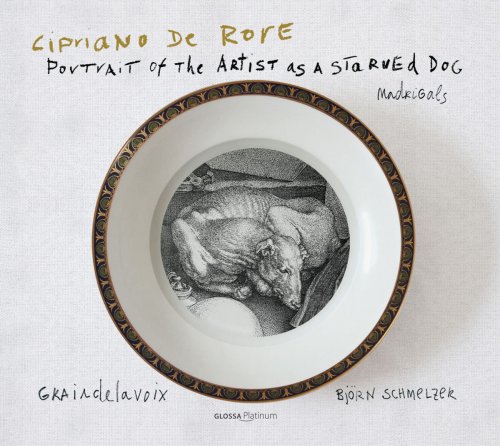Lluís Coll i Trulls, Floris de Rycker & Graindelavoix - Portrait of the Artist as a Starved Dog (2018)

Artist: Lluís Coll i Trulls, Floris de Rycker, Graindelavoix
Title: Portrait of the Artist as a Starved Dog
Year Of Release: 2018
Label: Glossa
Genre: Classical
Quality: flac lossless +Booklet
Total Time: 01:15:20
Total Size: 389 mb
WebSite: Album Preview
TracklistTitle: Portrait of the Artist as a Starved Dog
Year Of Release: 2018
Label: Glossa
Genre: Classical
Quality: flac lossless +Booklet
Total Time: 01:15:20
Total Size: 389 mb
WebSite: Album Preview
---------
01. L'ineffabil bontà del Redentore
02. Queste non son più lagrime
03. Non son io che pai' in visio
04. Era il bel viso suo qual esser suole
05. Convien che ovunque sua sempre cortese
06. Come la notte ogni fiammella è viva
07. Alcun non puo saper da chi sia amato
08. L'inconstantia che seco han
09. La giustitia immortale
10. O morte eterno fin
11. Se ben il duol
12. Mia benigna fortuna
13. Beato mi direi
14. Poi che m'invita Amore
15. Dissimulare etiam sperasti
16. Se come il biondo crin de la mia Filli
17. Mentre, lumi maggior
The sixteenth-century madrigalist Cipriano de Rore perhaps remains something of a mystery figure in modern times, awaiting penetrating simplification and clarification. Rather than simplification, a new recording of selections from his expressive output from Björn Schmelzer and Graindelavoix, entitled Portrait of the artits as a starved dog, is more likely to yield illumination and fascination. That is Schmelzer’s way.
As with many Graindelavoix recordings on Glossa, the accompanying artwork in the CD booklet forms an integral part of the convincing performance (as does Schmelzer’s essay). Here, the imagery includes images by Albrecht Dürer and Hans Mielich, statues of Melpomene and Medusa, sculptures by Michelangelo, even a sardonyx cameo cup. A portrait of De Rore shows the inner likeness of the composer as being possessed of a manic madness or “furor divinus” and having the guise of an emaciated dog.
De Rore was born in Ronse – not that far from Schmelzer’s Antwerp – and, as well as probably being under the protection of Margaret of Parma, he travelled through Europe in the first half of the sixteenth century, notably to Ferrara. Regarded as a pivotal figure in the evolution of the madrigal, De Rore’s style developed significantly across his career and Graindelavoix’s programme gravitates from some of his settings of stanze from Ariosto’s epic poem Orlando furioso through to some of his later, much more radical madrigals. Also found on this recording is De Rore’s multi-voiced setting of Dido’s lament from Virgil’s Aeneid.
Hi-Res version








